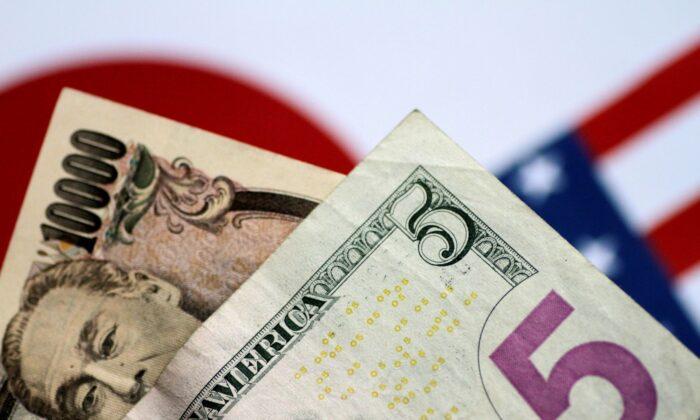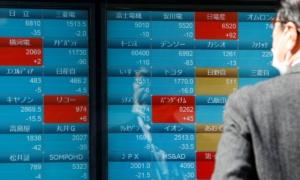LONDON—The yen slipped on Tuesday after its biggest daily rise since mid-July the day before as comments from Japan’s top central banker on a possible end to its negative interest rate policy reverberated throughout markets.
The dollar, meanwhile, regained lost ground after clocking its biggest daily fall since July 13, while the pound slipped after mixed labor market data.
Bank of Japan (BOJ) Governor Kazuo Ueda told a newspaper interview over the weekend the bank could get enough data by year-end to determine whether it can end negative rates, remarks that on Monday saw the yen clock its largest daily gain against the dollar since July 12.
The Japanese currency was last 0.1 percent lower at 146.71 per dollar, after scaling a one-week top of 145.91 in the previous session.
“Ueda’s comments were a little more balanced than you would have thought from the market reaction,” said Adam Cole, chief currency strategist at RBC Capital Markets.
“Japan is still a long way from meeting the criterion of sustainable 2 percent inflation and the comments don’t really change much for me,” Mr. Cole added.
The yen has come under immense pressure against the dollar as a result of growing interest rate differentials with the United States, since the Federal Reserve began its aggressive rate-hike cycle last year while the BOJ remains a dovish outlier.
Taking a different view, however, Japan’s senior ruling party official Hiroshige Seko said on Tuesday he took Mr. Ueda’s remarks as meaning that the central bank will continue with monetary easing.
Elsewhere, the U.S. dollar reversed some of its losses from the previous session, with the euro falling 0.3 percent to $1.0718 after touching a one-week high of $1.0771 before Thursday’s European Central Bank policy announcement.
The pound fell after a mixed labor market report that showed more signs of cooling in the three months to July, but wage growth continued to rise quickly, and above the rate of inflation.
“Drill down and if you strip out the public sector, private sector pay barely increased in level terms between June and July,” said ING UK economist James Smith.
“With unemployment notching higher, the labour market data doesn’t scream a need to keep hiking rates much further.”
US Inflation Data in Focus
Attention was now turning to U.S. inflation data for the month of August due on Wednesday, with traders on the lookout for whether the Federal Reserve has further to go in raising rates.The U.S. dollar index, which ended last week with an eight-week winning streak, rose 0.2 percent to 104.76, after falling 0.46 percent in the previous session, its biggest one-day drop since July 13.
“The U.S. data is the main event of the week because the Fed is so sensitive to incoming inflation data,” RBC’s Cole said, noting that the bigger risk for the dollar is to the downside, given a larger number of forecasts for core inflation are to the above consensus.
“An in-line number would be disappointing for the dollar and therefore we’re negative on the release itself,” Mr. Cole added.
The Aussie was last marginally higher at $0.6436 while the New Zealand dollar fell 0.1 percent to $0.5915.
The onshore and offshore yuan both found support near their one-week highs and last bought 7.2887 per dollar and 7.3058 per dollar, respectively.
The two had clocked their largest daily gain against the dollar in about six months on Monday.
In cryptocurrencies, bitcoin rose more than 2 percent to $25,849, after falling below $25,000 for the first time in three months on Monday.







